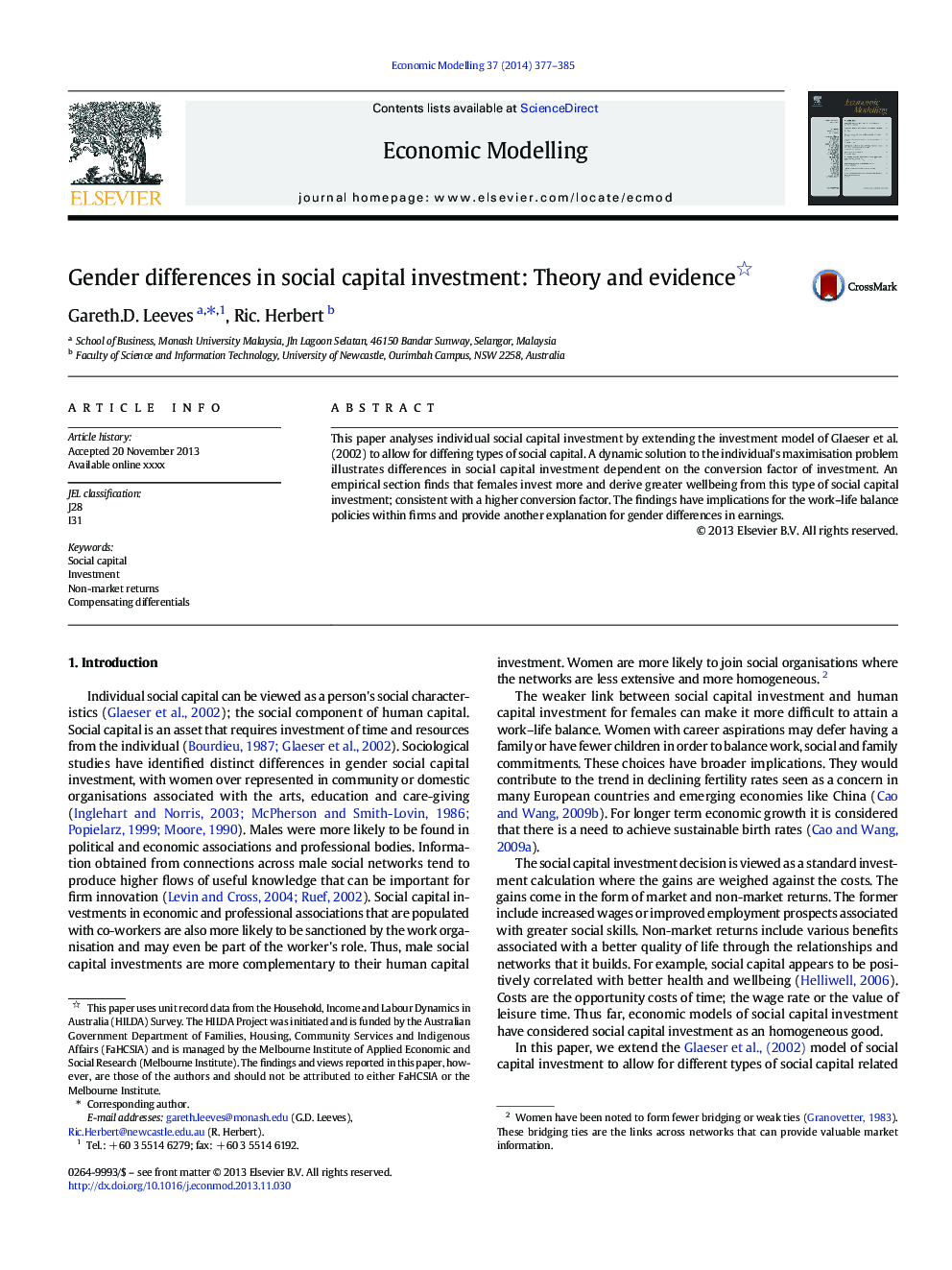| Article ID | Journal | Published Year | Pages | File Type |
|---|---|---|---|---|
| 5054560 | Economic Modelling | 2014 | 9 Pages |
Abstract
This paper analyses individual social capital investment by extending the investment model of Glaeser et al. (2002) to allow for differing types of social capital. A dynamic solution to the individual's maximisation problem illustrates differences in social capital investment dependent on the conversion factor of investment. An empirical section finds that females invest more and derive greater wellbeing from this type of social capital investment; consistent with a higher conversion factor. The findings have implications for the work-life balance policies within firms and provide another explanation for gender differences in earnings.
Related Topics
Social Sciences and Humanities
Economics, Econometrics and Finance
Economics and Econometrics
Authors
Gareth.D. Leeves, Ric. Herbert,
